Have questions about the different types of flour and their uses?
You're not alone! In the next few minutes we'll look at a variety of different kinds and when you should (and shouldn't) use them plus how to make easy substitutions.
Table of Contents
- What is flour?
- One flour does not fit all
- What is flour made of?
- Organic
- Wheat
- Bread flour
- Cake
- Eikorn
- Graham
- Pastry flour
- Self-rising
- Semolina
- White (all-purpose)
- Whole wheat
- Whole Wheat Pastry Flour
- Vital wheat gluten flour
- Non-wheat flours
- Almond (GF)
- Amaranth (GF)
- Buckwheat
- Coconut (GF)
- Commercial gluten-free blends (GF)
- Corn flour/corn meal (GF)
- Potato (GF)
- Oat (GF)
- Rice (GF)
- Rye
- Sorghum (GF)
- Soy (GF)
- Spelt
- Tapioca (GF)
- Teff (GF)
- About proteins
- Create your own unique blends
- How to store flour
- Frequently asked questions
- Grinding flour at home
- Related posts
- 💬 Comments
What is flour?
Flour is a powder that is made from ground grains, nuts, and seeds. It's used for thickening sauces, all kinds of baked goods, and dredging meats before browning.
Grinding was originally done between two stones, and you can still get stone-ground flour of various sorts. Nowadays it's more likely to be ground in a motorized grinder.
Wheat flour is the most common type of flour used. It's the choice for bread baking, cakes, cookies, and doughs of all kinds.
However, flour can be made from everything from garbanzo beans to sunflower seeds. Each type will give you a different texture, flavor, and result in your baking.
One flour does not fit all
Flour is one of the most commonly used ingredients in the kitchen and, perhaps, the least talked about.
I've been an avid baker all of my life, eventually becoming a food writer, recipe developer, and author of over 10 cookbooks. I can tell you that flour is really one of the most misunderstood ingredients in the home kitchen.
Most people stick with all-purpose for everything from bread to cookies although there are numerous varieties
Tsk, tsk. Different flours work best in different types of recipes.
There are many types and each has a number of different uses.
Although wheat flour (whole wheat, all-purpose, cake, bread, etc.) is typically used in most baking there really are plenty of other choices.
Different kinds have different characteristics and can not necessarily be used interchangeably. When you know the strengths and weaknesses of each type you can use it to your advantage in your baking.
What is flour made of?
Different kinds of flour are made of different things. Common wheat and white flours (all-purpose, whole wheat, cake) are made from wheat.
The wheat berry is harvested and ground into flour. Whole wheat flour is more nutritious because the whole wheatberry is ground. This makes it a great source of the B vitamins found in the whole grain.
White flour has the wheat germ removed so it is less nutritious.
Other flours are made of seeds, dried fruit, and other plants that have been dried and ground.
There's even a cricket flour that's made of... you guessed it! We won't be discussing that here.
Organic
Organic flours are grown and processed according to standards set forth by the USDA. If the package does not have the 100% organic stamp on it you can be pretty sure it is not organic.
Many types are available in organic varieties. Be sure to really read the labels!
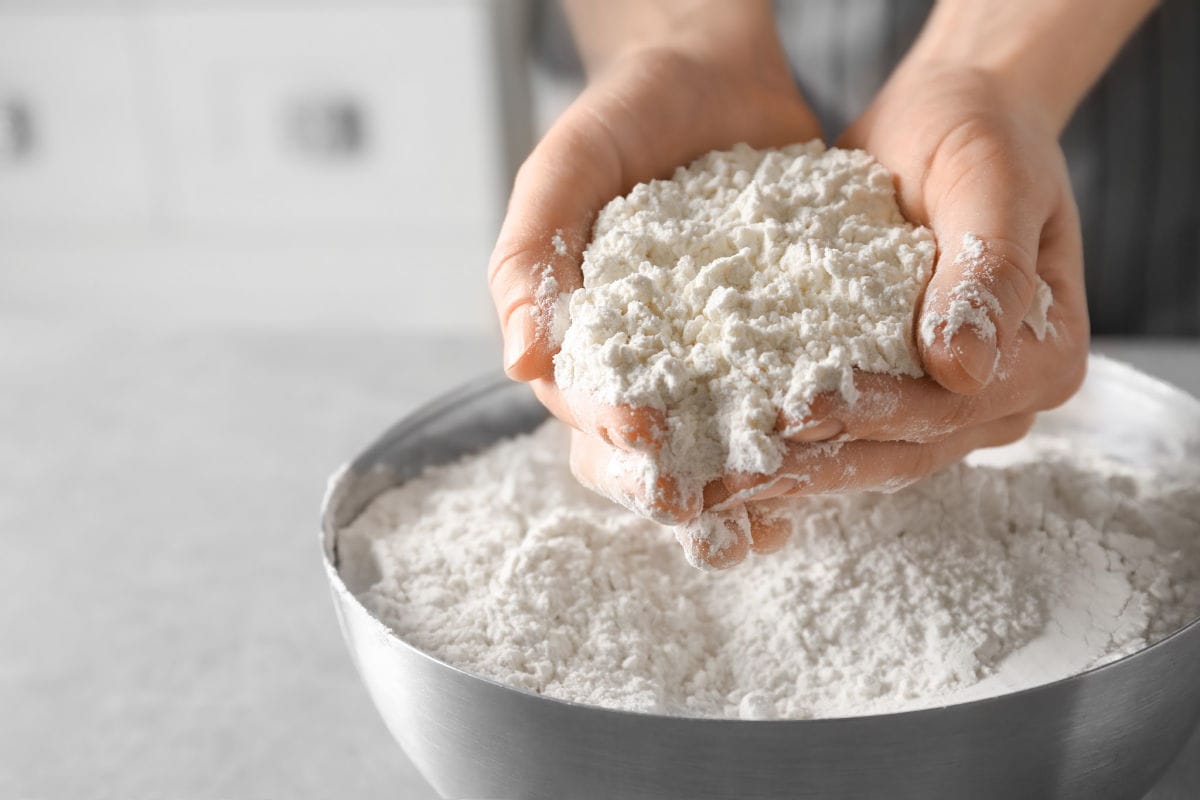
Wheat
Wheat is grass. The seeds, commonly called wheat berries, are ground to create flour.
There are several types and the uses for them range from delicate cakes to sturdy artisan breads.
It can be stored at room temperature for six to eight months after grinding.
On the other hand, wheat berries can be stored indefinitely as long as they are sealed and in a cool try spot.
Expert Tip: Adding a bay leaf or two to a canister of flour or wheat berries will keep out bugs without adding bay flavor - unless (like me) you forget about them and scoop them up with your flour and bake them into a cake.
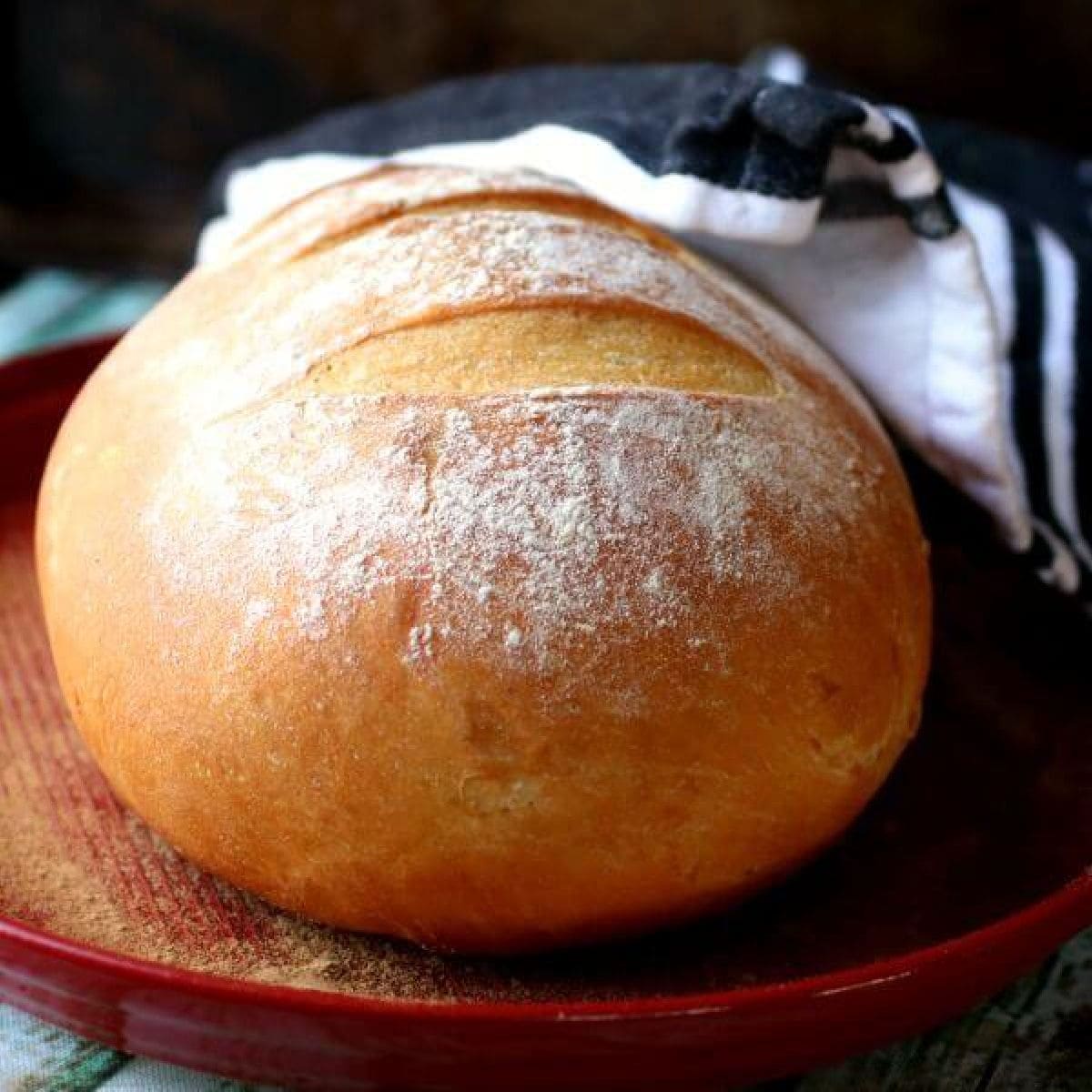
Bread flour
White flour which is made from hard wheat is called bread flour.
The higher protein gives it a higher gluten content. This is the best choice for yeast breads.
Yeast doughs made with this type of flour must usually be kneaded longer than those made with all-purpose but they tend to rise higher.
The longer it's kneaded (within reason) the more the gluten develops. This type of flour will give you a chewy bread and crisper crust. Be sure to always follow the recipe for kneading time and dough texture.
It's what I use in this delicious buttermilk bread recipe.
- Use for all kinds of yeast breads.
- 12 to 15% protein
Cake
Cake flour is white flour that's made from soft spring wheat - which means it will have a lower protein count and less gluten than the hard winter wheat type.
It's also got a fine texture which keeps the baked goods made from it light and fluffy - angel food cake, for example.
It has a high starch content and low protein which helps make the finished baked goods delicate and light.
Cake flour is bleached, which means it goes through a chemical process that chlorinates the flour. This process helps to improve the texture of the finished product.
Cake flour cannot be used for yeast bread.
- Use for: cakes, biscuits, muffins, pie dough, and scones.
- 6 to 8% protein
Expert Tip: If you don't have cake flour you can use white all-purpose flour and replace two tablespoons of flour with two tablespoons of cornstarch per cup of flour.
Eikorn
Eikorn flour is made from (what we think) is the most ancient wheat. It's chromosome makeup is less complex than modern wheat and it contains less gluten.
It is NOT gluten-free.
It has a higher percentage of protein than modern wheat and also has also higher levels of fat, phosphorus, potassium, pyridoxine, and beta-carotene.
Many people have said that this variety is healthier than regular wheat and safer if you are gluten intolerant.
Keep in mind that different people will have different reactions and if you are gluten intolerant this is not a good choice, in my opinion.
- Use for anything you'd use all-purpose flour in. You may need less liquid.
- 13% protein
Graham
Graham flour is a coarse grind used in graham crackers and some muffins and breads. It is sweet and nutty in flavor.
This flour is made by grinding the bran, germ, and endosperm (interior) of the wheat berry separately and then combining them again.
- Use for muffins, crackers, breads
- 12.1% protein on average
Expert Tip: Use a mixture of 2:1 white flour and wheat bran plus two teaspoons of wheat germ per cup to substitute for graham flour in a recipe.
Pastry flour
Pastry flour is an unbleached type that's made from soft wheat so it has lower protein levels than all-purpose flour but more protein than cake flour.
- Use for pie and tart crusts as well as some cookies that you'll want to be crumbly.
- 8% protein
Expert Tip: You can substitute 1-⅓ cups all-purpose flour plus ⅔ cup cake flour for pastry flour. Mix well and store in a cool, dark place.
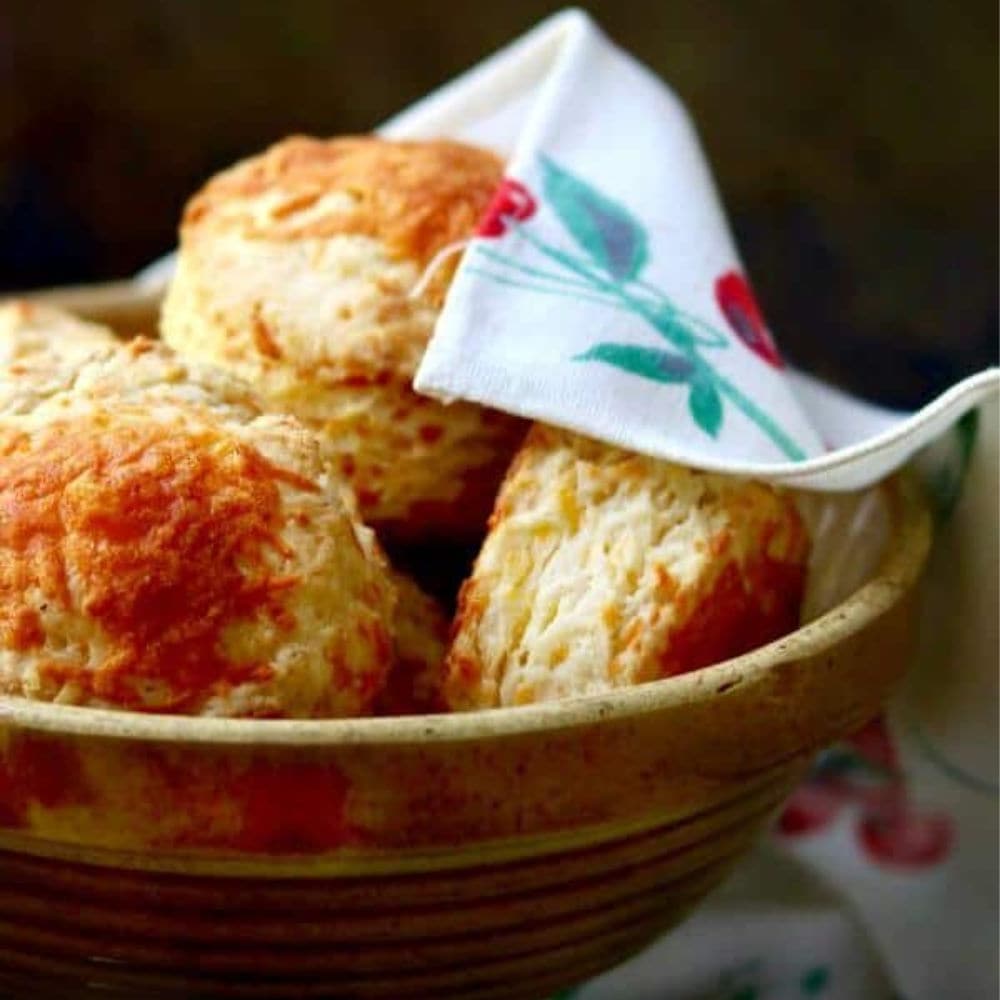
Self-rising
Self-rising flour is an all-purpose type that has salt and leavening already added to it. Many people, especially in the South, use self-rising flour for biscuits and quick breads.
You can't use it for yeast bread. Never add salt or leavenings to recipes where self-rising flour is called for.
- Use for quick breads; muffins, pancakes, and biscuits.
- 10-13% protein - the same as all-purpose
Expert Tip: Use 1 cup all purpose flour, 1-½ teaspoons baking powder, and ½ teaspoon salt as a substitute for self-rising. Store in a cool, dry place.
Semolina
Semolina flour is made from Durham wheat. This is a very high-protein wheat that allows the dough to be very elastic.
It's used to make pasta almost exclusively, although there is a semolina cake and some other baked goods as well.
- Use for pasta and some baked goods like pizza.
- 12.5% protein
Expert Tip: You can substitute bread flour for semolina or use ¾ cup plus 2 tablespoons of all-purpose plus 2 tablespoons vital wheat gluten for every cup of semolina flour.
White (all-purpose)
White flour is wheat flour that has the bran and the germ removed. It may be bleached or unbleached.
Bleached flour goes through a chemical process to make it lighter. If it's organic it cannot be bleached.
This flour has to be enriched with vitamins and nutrients because the natural nutrients are removed with the bran and germ.
White flour is called all-purpose flour because it can be used with satisfactory results in almost any baked product. Since unbleached flour has a little more protein than bleached flour it is less desirable for cakes and delicate baked goods.
- Use for anything, including thickening sauces. Cookies, cakes, breads, biscuits, scones, pancakes, quick breads...
- 10% protein
Whole wheat
Whole wheat flour contains the whole grain of wheat; the bran, the germ, and the starch. It is high in fiber and vitamins and doesn't have to be enriched.
It is good for breads and some baked goods. It does give a coarser, denser finished product.
If you are baking bread with whole wheat flour you'll need to knead it somewhat longer than with all-purpose.
Use for anything you'd use all-purpose flour for. Be prepared for the texture to be different than when using white flours.
- Use for breads, cookies, cakes, biscuits, scones, pancakes etc.
- 13-14% protein
Whole Wheat Pastry Flour
Whole wheat pastry flour is milled from soft spring wheat and has a lower protein count than normal whole wheat. It is used for whole wheat pie crusts and can be used as whole grain cake flour.
- Use for pie and tart crusts as well as some cookies that you'll want to be crumbly.
- 10% protein
Vital wheat gluten flour
Wheat gluten is part of the wheat that carries the protein and gives the dough elasticity. This can be added to lower protein flours to give the finished bread extra protein and a better texture when other flours are used.
- Use for adding to yeast bread mixtures to improve texture.
- 70% protein
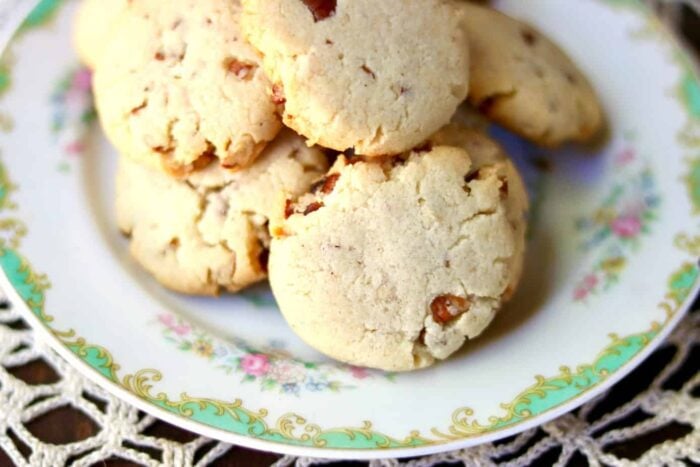
Non-wheat flours
Some flours are made from crops other than wheat. They can be used by people on a gluten-free diet as well as by bakers wanting to add a variety of textures and flavors to their baked goods.
Many of these products need to be mixed with at least a little wheat (if you're not on a gluten-free diet) so that they include gluten and have a better texture.
Since there is no gluten in these products they will not rise properly on their own and will have a heavier, denser texture than products made with wheat flours.
I've noted where some of these flours work best. If there's no "used for" note then you can use it as you wish.
This is NOT an exhaustive list - there are many different types of flours that are not made from wheat and "new ones" are being created every day. Some companies specialize in gluten-free flour blends that help make gluten-free baked goods lighter.
Almond (GF)
Almond flour is a gluten-free flour that's made out of blanched almonds that have been ground. It's often used as a low-carb substitute for wheat flour in baking.
It (no surprise here) gives baked goods a delicate almond flavor.
Amaranth (GF)
Amaranth is another "ancient grain" that was used by the Incas and other cultures. It has an earthy, nutty flavor but takes on the flavors of other ingredients.
You can use it to replace 25% of wheat flour in recipes but it can't be used alone and should be combined with other flours when baking.
Use for: tortillas, pie crust, breads
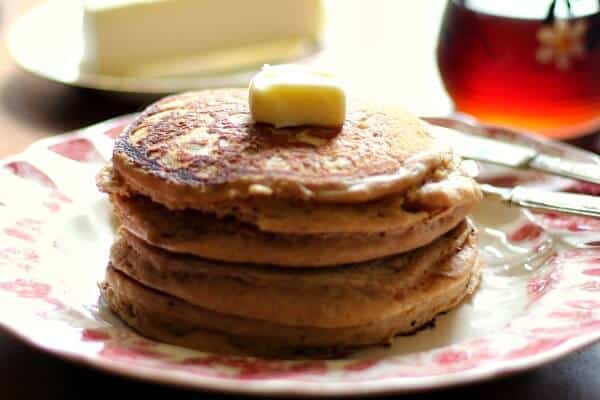
Buckwheat
Buckwheat is a low-gluten grain that has a nutty flavor. It can be used in many baked goods and is most often used in buckwheat pancakes. This whole-grain flour is high in fiber, amino acids, and protein.
It is not wheat at all, but a type of fruit related to wild rhubarb.
Since it does contain a little gluten you shouldn't use it if you are gluten intolerant.
Use for: noodles, pancakes, and waffles
Coconut (GF)
Coconut flour is high in fiber, gluten-free, and low-carb.
It's made from ground coconut and adds a sweet coconut flavor to baked goods.
You can substitute this for up to 25% of the wheat flour called for in your recipe if you are not using it for low-carb. It's very dry and soaks up a lot of moisture so it's best to use it along with another gluten-free product like almond flour.
Commercial gluten-free blends (GF)
Commercial gluten-free flour blends are different mixtures of gluten-free flours - there's not necessarily a standard mix. you'll want to try several to see what works best for you.
These are used as a substitute for any product made with all-purpose flour.
Corn flour/corn meal (GF)
Corn flour is what most of us call cornmeal. It's gluten free and generally used for quick breads and pancakes.
It can be used with yeast as a leavener as long as a larger percentage of wheat flour is added.
Corn flour adds a sweet, nutty flavor to any bread or baked good.
Potato (GF)
Potato flour is made from potatoes which have been cooked and dried. It gives a distinct potato taste to the baked goods it is used in.
It has no gluten and can be used to replace up to 25% of wheat in recipes.
Oat (GF)
Oat flour is made from oats. It can be used in breads, cookies, and dense cakes.
You can replace up to 25% of the wheat flour with oat flour but be sure to add about an extra ⅛ teaspoon of your leavener.
Although this is technically gluten-free you need to be careful that there isn't cross contamination. Many mills grind wheat as well as oats and the possibility of cross-contamination is very real.
Read the label!
Rice (GF)
Rice flour is a fine flour made from milling rice. It is gluten-free and can be used in many baked products. Because of the lack of gluten your end results will have a different texture if you use it in the place of wheat flour.
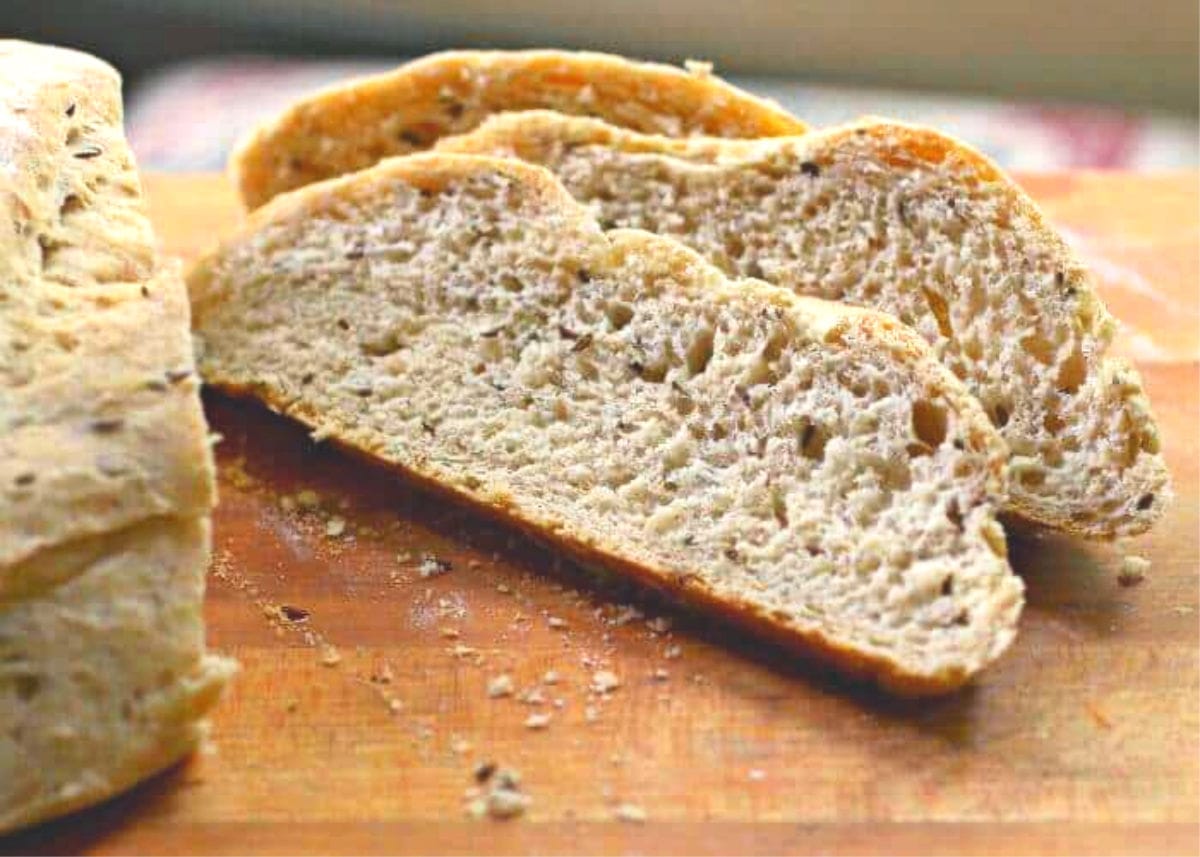
Rye
Rye Flour has a low amount of gluten and without the addition of something with gluten the texture will be dense.
If you are making sourdough starter rye flour works great to build the starter.
- Dark rye is the ground grain without the bran and germ removed.
- Light rye has both the germ and the bran removed.
Sorghum (GF)
Sorghum flour is made from an ancient cereal grain. It's light in color and texture with a mild, sweet flavor. It’s often mixed with other gluten-free flours or used in recipes requiring small amounts of flour.
It's high in fiber, protein, and iron.
Soy (GF)
Soy flour has high protein. It is the result of soybeans being ground up. It should be stored in the refrigerator.
Soybeans are naturally gluten-free but cross-contamination with wheat flour is possible.
Spelt
Spelt flour is a popular non-wheat flour. It is similar in taste to whole wheat and contains a small amount of gluten.
You can substitute it for whole wheat flour in many items.
It has a higher protein content than wheat and a more intense flavor. Since the proteins are easier to digest many people who are allergic to wheat flour can eat spelt.
Tapioca (GF)
Tapioca flour is made from the cassava root. It is can be used in baked goods for people on gluten-free diets.
Teff (GF)
This flour is full of nutrition. It is higher in protein than wheat and has calcium and iron.
Teff does not contain gluten. It can be used in tandem with wheat flour for yeast breads but is too soft to be used on its own.
It is excellent in muffins and quick breads.
About proteins
As you've seen, different types of flour have different percentages of protein but you may not know why this is important.
When you mix the flour and a liquid together it activates wheat proteins that give structure and elasticity to your baked goods. The higher the percentage of protein the more gluten can be formed.
You can control gluten formation by how you mix your batter. For example, kneading for 10 minutes will create a very elastic dough which is good for bread.
When you make a cake the instructions may tell you to mix or fold quickly and not to overbeat. This is because you want the cake to be light and tender so you don't want to develop the gluten.
Create your own unique blends
Using a variety of different flours in your baked goods not only adds flavor; it adds nutrition. You can create your own flour blends for specific purposes and increase the nutrition in the items you bake.
How to store flour
Most types of white flour are shelf-stable for several months. I usually put a bay leaf in the flour container to discourage weevils, however. White flour can be stored in a cool, dry spot like a cupboard or pantry for about three months.
After that it gets sort of stale and can develop and off-flavor. It will be fine stored in the freezer for a year.
Specialty or whole wheat flours are best stored in the refrigerator or freezer. This makes them last longer.
You see, there are natural oils in whole wheat and specialty flour and the oils will get rancid after a time. Chilling or freezing helps keep that from happening.
You can store whole wheat and most specialty flours in the refrigerator for six months or in the freezer for one year.
Frequently asked questions
Here are the questions I am most frequently asked about this recipe.
Sure! Experiment to create different flavors and textures.
Bread needs flour with a high protein (gluten) content in order to rise properly. Because of this bread flour is generally used for yeast bread because it has more gluten than other flours.
OO flour is an Italian milled flour that is used for making pasta. It's similar to unbleached all-purpose flour - a mix of hard and soft wheat but it is finer. It creates a dough that maintains a chewiness when the pasta is cooked.
Yes! All all-purpose flours are not the same, and there are definite differences from one part of the country to another. In the south flour brands generally have a lower protein and create a more delicate product so, for example, if you are making bread with all-purpose flour you might want to add some gluten flour.
While most people will opt for all-purpose flour you may find that pastry flour spreads less when you are making cookies.
Grinding flour at home
As an Amazon Associate, I earn from qualifying purchases.
If you are interested in really fresh flour for baking you might like to try grinding your own flour at home. There is nothing like the flavor of flour that is really fresh!
It's really easy. You'll need a flour mill and wheat berries, or other grains to be turned to flour. Most mills allow you to use gluten-free things like dried beans or corn to make flour with as well.
What’s new? Check out my Restless Chipotle & Co. Store on Amazon where you'll find all kinds of nostalgic goodness! Thanks so much for being a part of Restless Chipotle!
Related posts
Now that you know about different types of flour you can put that knowledge to use!
- Devils Food Spice Cake uses cake flour to keep it light and tender.
- Best Homemade Bread Recipes is a collection of the most popular bread recipes here on Restless Chipotle.
- Whole Wheat Bread Recipe is a honey cracked-wheat bread that has an amazing texture and chewiness.
- Recipe for Wheat Bread is real, old-fashioned wheat bread like your grandma made.
- No Knead Sandwich Bread is a simple, quick, batter bread that you'll love.
- Country Style Whole Wheat Dinner Rolls are perfect for holidays and dinners- they freeze well, too.
First published May 31, 2019. Last updated October 17, 2023, to include more information and for better readability.

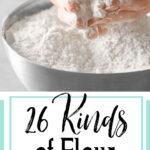
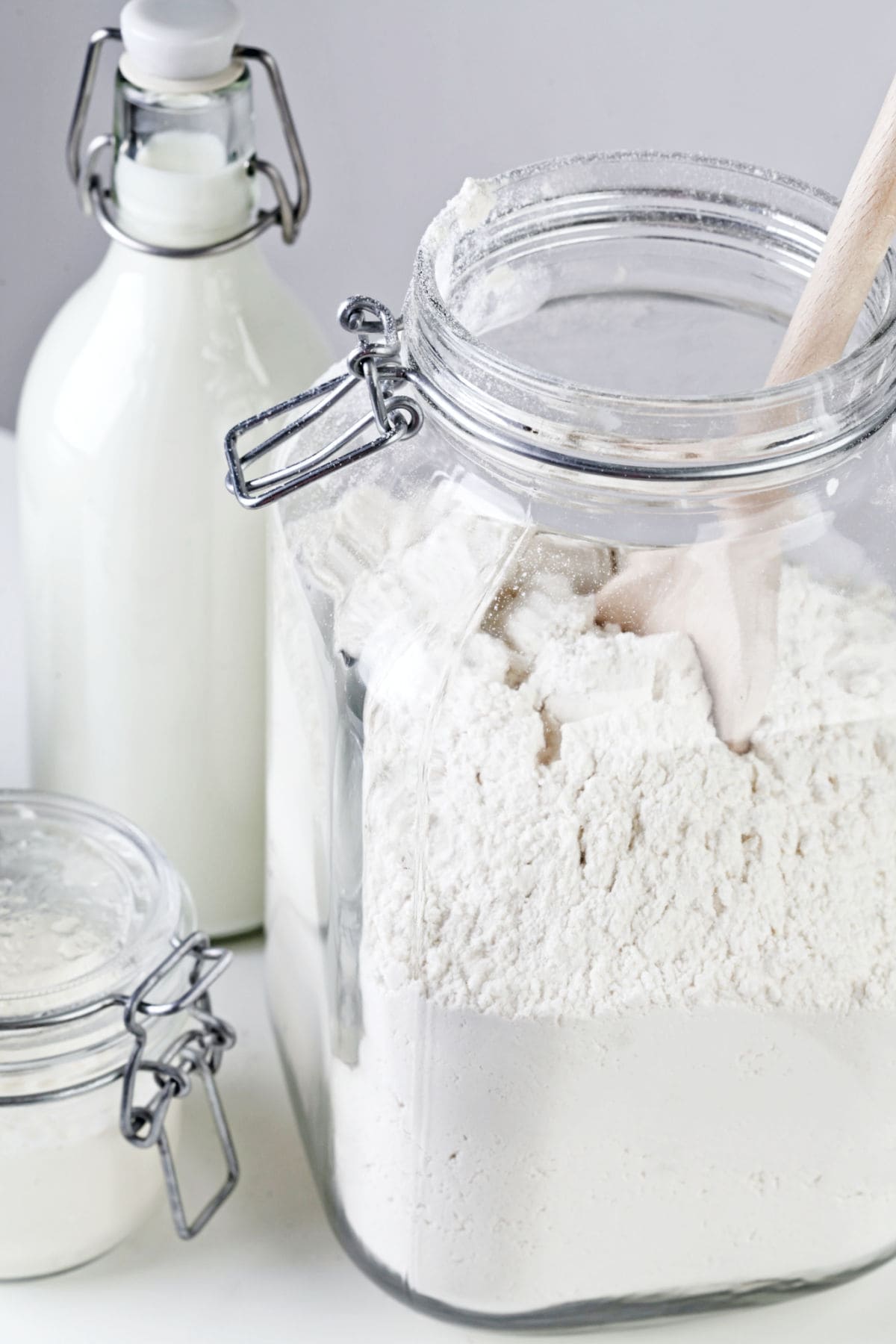
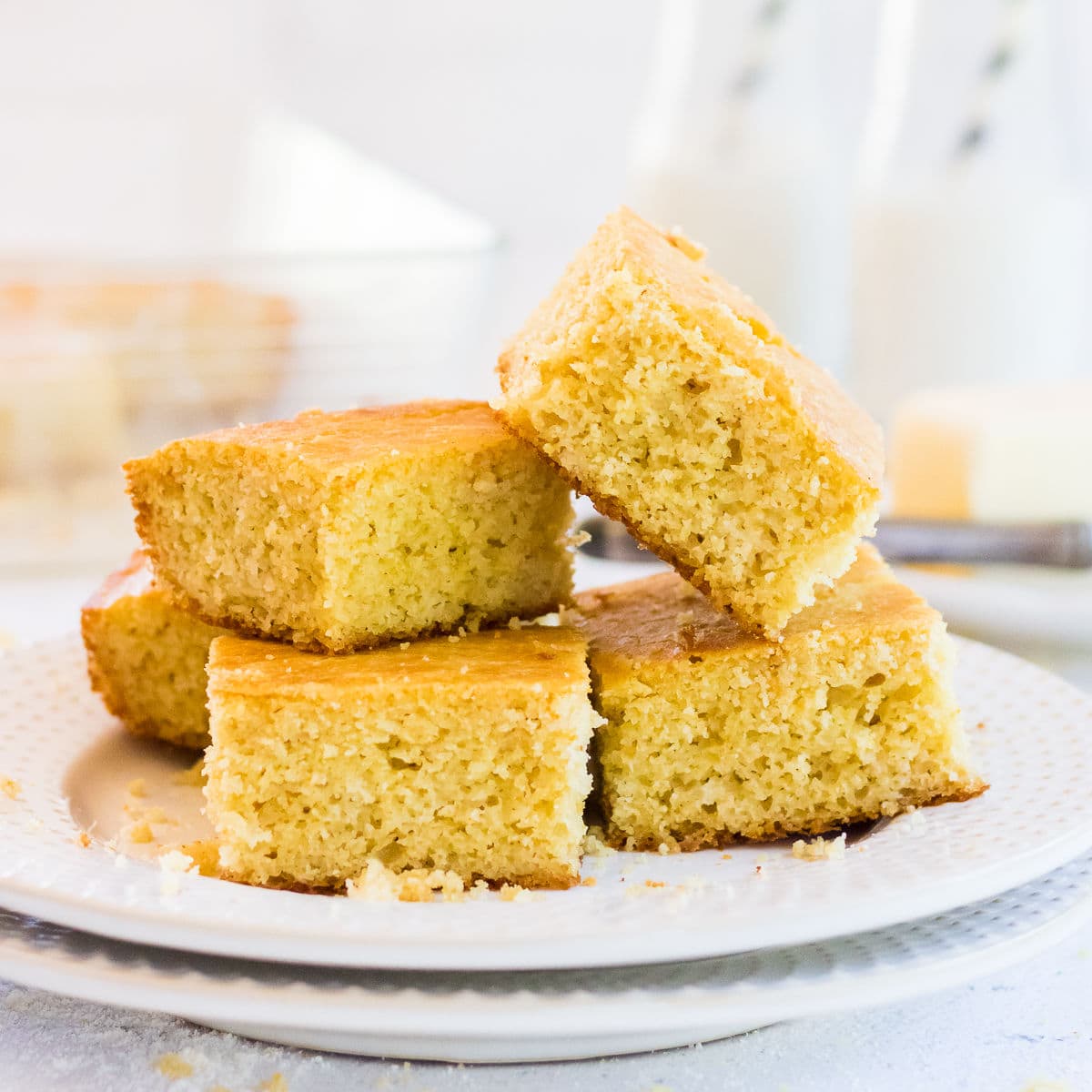
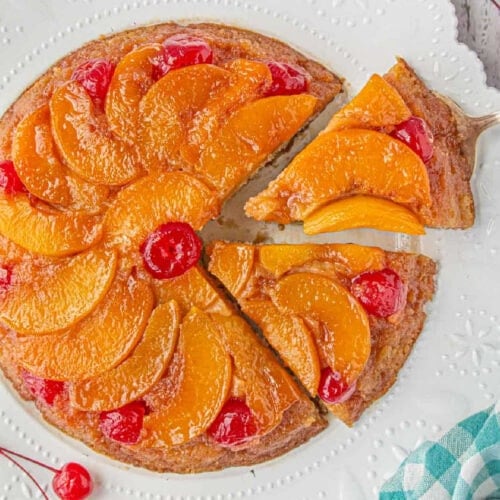
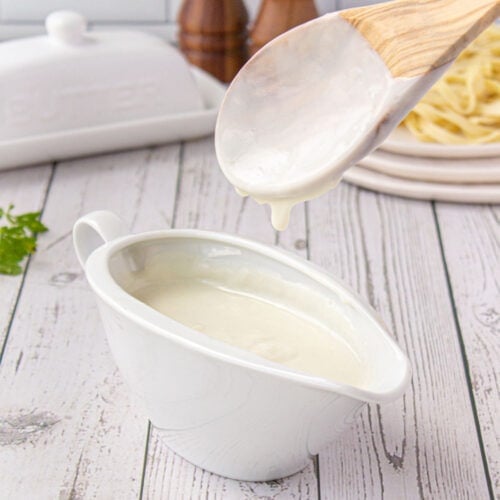
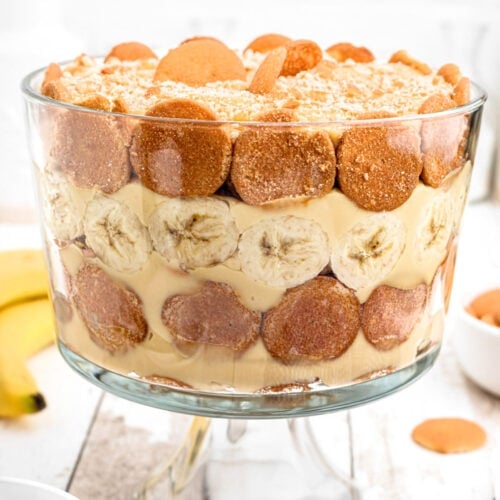
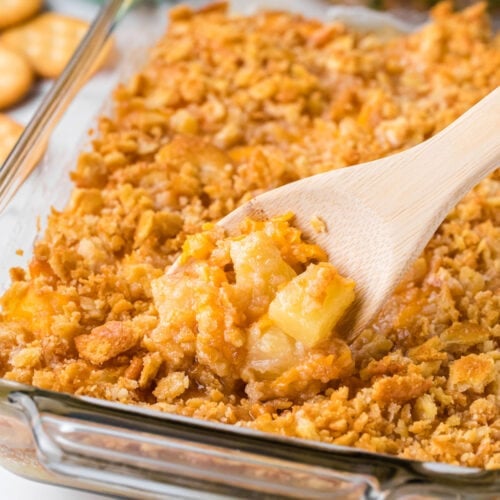
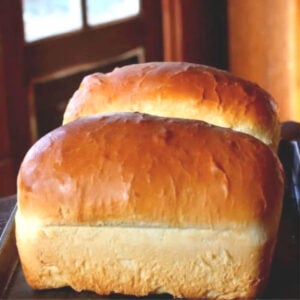
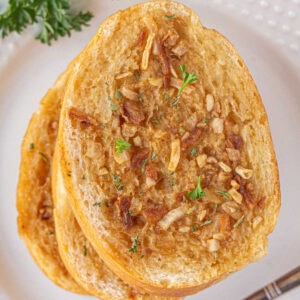


John h says
What flours can be used for frying/ chicken, wings etc
Marye says
Actually any of them can. 🙂
Theresa says
I have Whole Cell Wheat Flour. Is it any different then whole grain fresh milled wheat?
Marye says
I'm not familiar with this type of flour so I really can't say.
Cheryl says
Hello
The info was great. I want to make a really good dough for rolls, bread and pizza. I found a sweet potato roll recipe that calls for 3-1/2 cups of all purpose flour. I want to make it healthier and with a unique and flavorful taste. I'm thinking of spelt flour and chickpea flour. Would that be a good combination? I want the rolls and pizza dough to be soft inside and crisp outside.
Marye says
Chickpea flour does not have gluten and the gluten in spelt flour is more delicate than the gluten in wheat flour. You "can" use them to make yeast doughs but your results will not be the same as when using wheat flours - likely you'll get less rise, there will be less chewiness, etc. I recommend that you search for recipes that specifically call for these ingredients.
Lyle Hadley says
This is such great information and in one place! Thank you for the time you must have put in to this it really is appreciated!
Rowena Stone says
Would love this on an excel spread sheet or easy reference chart.
Or maybe just printable.
Marye says
Wouldn't that be great? Feel free to do that if you have time. 🙂
Bobbity says
Fantastic. Would to have a "print" tag and have this in hand at lunch break. Kinda like the recipe's.
Allan says
No such thing as a "wheat berry", because wheat is a grass, not a fruit. Literally, a hulled grain of wheat is called a "wheat grain".
Marye says
Very true. BUT the common name - and the one most people know it by is ... wheatberry. SO, that's what we use. Thanks so much for your valuable input!
Sue says
Love all the information. It is a GREAT help. Thank you
Marye says
Great! Thanks for letting me know.
Mare Holloway says
Great information! 5 stars from me. Have a wonderful blessed day!
Marye says
thanks!